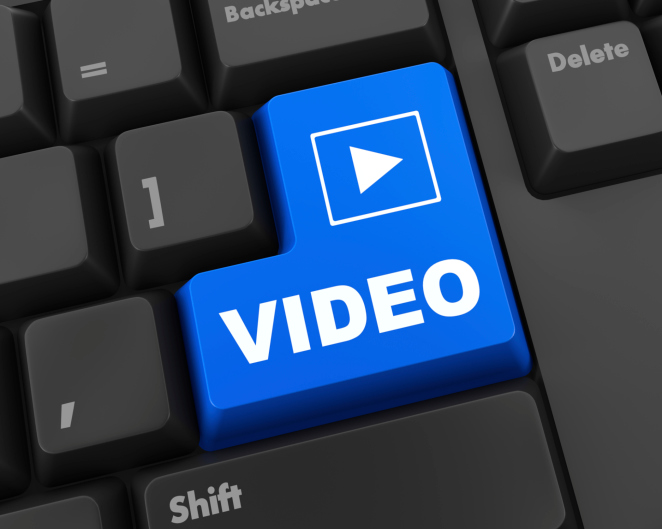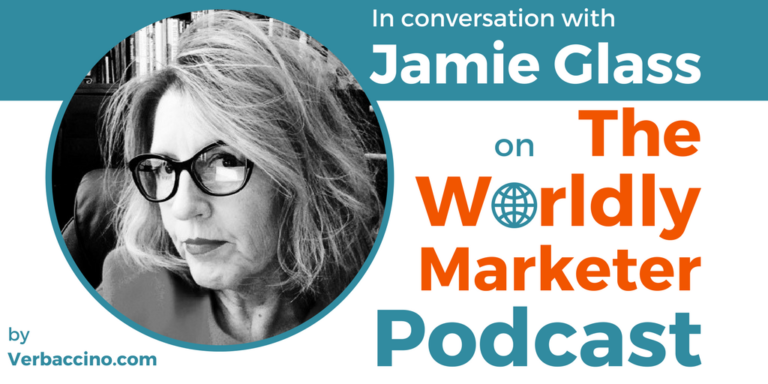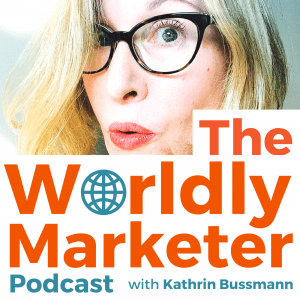Here are 12 ways you can drive awareness, influence and engagement through the use of video. In fact, you may even see an uptick in revenues because videos have proven to be very good for business.
- Vlogging: There is a growing shift from blogging (written) to vlogging (video) because of the domination of YouTube as the number one video content sharing platform. It is also very easy to get started, as you only need a video camera, YouTube account and great content to potentially become a world-renowned video star. Helpful Resource: Vlogging vs Blogging: The Complete Run Down Plus Pros & Cons
- Video Podcasts: Podcasting popularity continues to rise with 57 million Americans listening every month. Podcasters have seen a steady climb in audiences over the past 10 years because of better technology, discoverability and sheer volumes of content in this format. Video now helps podcasters differentiate themselves, grow emotional engagement with their audience, increase sharing and deliver content with a longer shelf-life.
- Training and How To’s: Two of the top three uses for videos are ‘explainers’ and ‘how-to’ videos. Audiences prefer easy to follow video instruction over references that are in writing or audio only. This content is easily shared on internal portals, websites and social channels to reach the broadest audience. In a 2017 video use survey found 62% of businesses have an explainer video and of those 97% said that their explainer video has helped increase user understanding of their product or service. Additionally, 81% said that their explainer video has helped their business increase sales. (Source)
- Commercials and Advertising: In ‘Marketing Charts Usage Trends’ report it is noted that in the past two years, video advertising has the highest usage growth rate for B2B marketers. Source Digital advertising has higher performance ratings over out-of-home (OOH) and traditional network media channels.
- Product Demos: Animoto reports that four times as many consumers would rather watch a video about a product than read about it. According to Wyzowl’s The State of Video Marketing 2017 survey, 84% of consumers have been convinced to make a purchase after watching a brand’s video. Experience and testimonials effectively sell products and services. Video is best at capturing the consumer experience. (Source)
- DIY Videos and Product Placements: There is a growing use of product placements on YouTube and other social media platforms because of the relationships their easily defined demographic audiences have with content creators and celebrity endorsers. Celebrity vloggers provide a perception of authenticity by reaching out to their loyal followers and sharing product information.
- Edutainment: Educational entertainment videos are utilized to increase engagement and retention for learners through the use of game-based learning experiences and various types of digital entertainment. It is often used to create video content series, character-based programs and simulations.
- Thought Leadership: Thought leadership videos are the 5th most popular video content type for businesses as they help to share expertise with a global audience. TED is a perfect example how videos can be effectively used to share complex, thought provoking and cultural ideas. TED is a non-profit global community that hosts online TED Talk and Conference videos of experts and thought leaders on hundreds of science, business and global topics, in more than 100 languages .
- Branding: Video empowers brands share experiences by reaching and influencing a targeted audience through engaging digital stories and visual interests. Video is the most powerful format for storytelling, helping businesses captivate buyers, build trust and create loyal followers. Why video matters in branding, YouTube reaches more 18-34 and 18-49 year-olds than any cable network in the US. Generation Z, made up of 84.7 million kids born between 1996 and 2010, yield the future spending power so it is essential businesses connect through digital channels. Where are your buyers? Online, watching videos!
- Corporate Marketing: Approximately 78% of businesses use video on their website or product site, and 72% use it on social. Small Biz Trends reports businesses using video on their websites get 41% more traffic and see a 157% increase in organic traffic from search engines. The average user spends 88% more time on a website with video. Corporate communications are utilizing video to showcase their cultures and work experiences. They are also valuable in ensuring content visually expresses the brand identity, leadership principles and core values of the company.
- Sales and Ecommerce: Wyzowl reports 84% of consumers have been convinced to make a purchase after watching a brand’s video. Video on a landing page can increase conversions by 80% or more. Red Stag Fulfillment reports using product videos on ecommerce sites can increase product purchases by 144%, with video driving more ecommerce conversions than social media. Buyers research products and services online before they buy and most are looking for video content. Video is also viewed as innovative for sales presentations and pitches. Don’t be afraid of taking a boring presentation and making it an more engaging with a visual video representation that directly addresses the needs of your buyer.
- Shareable Marketing Content: Social Media Examiner reports that 74% of social media marketers use visual assets in their social media marketing. (Source) 92% of mobile video consumers share videos. If the content is available online, it’s likely to be shared with others.
Zenith’s Online Video Forecasts 2017 report estimates that consumers will spend an average of 47.4 minutes a day viewing online video this year. Mobile video viewing will increase by 35% to 28.8 minutes per day in 2017, and will rise by 25% in 2018 and 29% in 2019.
The most important consideration for business leaders are that videos are treated as an investment to create an asset. Be strategic and methodical in your video production, focusing on quality and consistency to get the greatest ROI.
Click here to read more about the value of video for growing your business.
Jamie Glass, CMO + Founder of Artful Thinkers, a sales and marketing consulting company.










You must be logged in to post a comment.